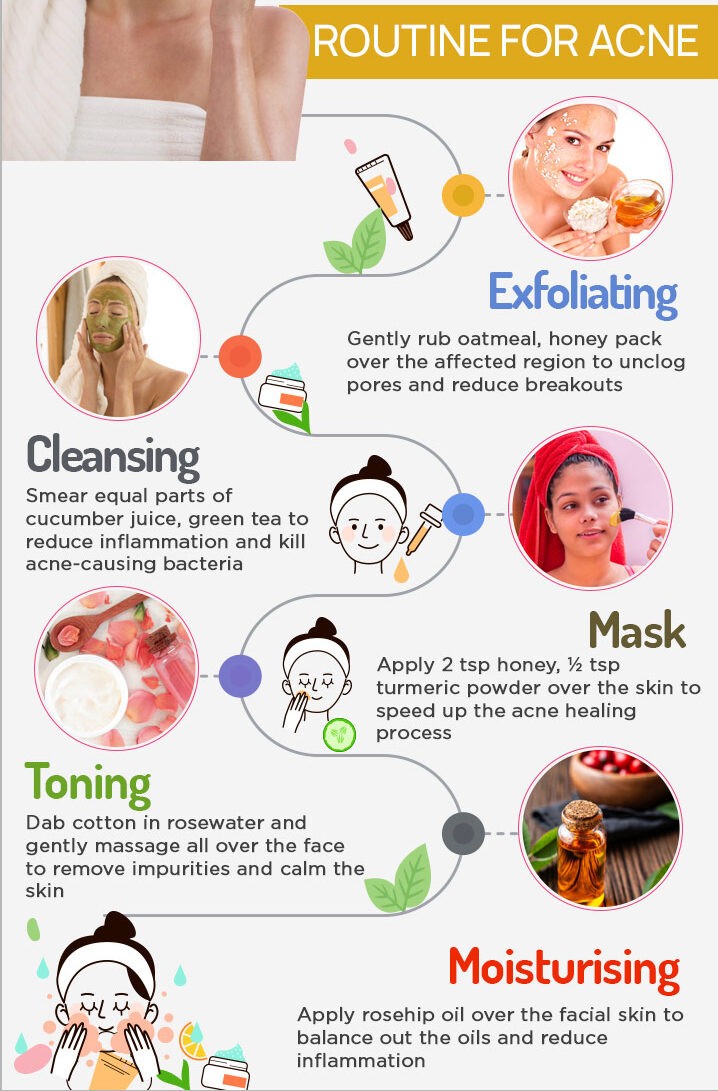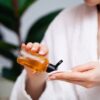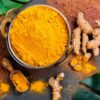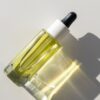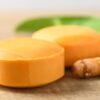
Turmeric is a popular herbal remedy used for acne vulgaris and many other skin disorders. Let’s understand the following first:
- What is Acne-prone skin
- Causes & Kinds of Acne
- Turmeric’s Potency for Acne Use
- Treating acne with turmeric
- Best & Healthy Ways to Use Turmeric for Acne
- Skin Care Routine to Reduce Acne Risks
- Things to remember when applying turmeric on the face
What is Acne prone skin?
When bacteria block your skin’s pores, dead skin and dirt form small inflamed zits called acne. Also, bacteria staying longer on the skin can trigger inflammation and infection, making skin prone to acne.
Causes & Kinds of Acne
There are two kinds of acne, including inflammatory and non-inflammatory.

Inflammatory Causes
A reddish appearance is called inflammatory acne.
It may appear in the form of the following:
- Papules
- Nodules
- Cysts
- Blemishes
Papules are small red bumps, while blemishes are small bumps full of pus. Papules often turn into blemishes. Nodules are formed underneath the skin and are quite painful.
Non-inflammatory Causes
It refers to clogged pores that appear as blackheads or whiteheads. Whiteheads are tiny skin-colored bumps. However, blackheads are dark in appearance and somewhat flat against the skin.
Turmeric’s Potency to Treat Acne
Turmeric is the answer if you struggle with acne and have sensitive skin. Owing to its anti-bacterial and antiseptic properties, turmeric helps prevent breakouts and heals acne. Plus, it is a great natural exfoliator, as turmeric is high in antioxidants, which slows down your skin’s biological and natural aging processes. It also has potent anti-inflammatory content, which helps reduce the symptoms and marks of acne.
Also, Watch the benefits of turmeric for the skin.
Treating acne with turmeric
Both oral and topical applications can help treat acne, while oral consumption commonly follows three methods:
turmeric as a flavor-enhancing spice in cooking, i.e., Turmeric Rice
Always be vigilant, as curcumin can interact with other medications and isn’t recommended for patients with gallbladder issues. You must consult your doctor before adding turmeric supplements to your acne treatment plan.
Best & Healthy Ways to Use Turmeric for Acne (DIY Recipes)
1. Turmeric, honey & milk face pack
Generally, honey is an excellent antioxidant in reducing inflammation and immediately soothes the redness and rashes on the face. Whereas milk contains alpha-hydroxyl acids (AHAs), which exfoliate dead skin cells that clog pores.
Directions
- Blend ½ tablespoon of turmeric powder, ½ tablespoon of milk, and ½ tablespoon of raw honey.
- Apply this paste all over your face and neck.
- Keep it on for 10-15 minutes.
- Rinse with lukewarm water.
2. Turmeric face pack for acne scars/blemishes
Commonly, the anti-inflammatory content in turmeric can fix your pores and fine lines. While acne bursts out due to the bacteria named Propionibacterium. Moreover, a study suggests curcumin-supplemented lauric acid is effective in combating acne-causing bacteria.
Combine turmeric powder with skin-healthy DIY face packs, such as honey, apple cider vinegar, yogurt, coconut oil, turmeric essential oil, or aloe.
Directions
Mix one tbsp. of honey with one tsp of organic turmeric powder.
Add a few drops of lemon juice.
Apply the paste to the skin.
Let it remain for 15 minutes.
Rinse with lukewarm water.
You can also use Homemade Turmeric Soap.
3. Turmeric Neem Paste
Neem leaves are generally effective due to their antibacterial effects against P. acnes and help you control acne.
Directions
- Boil 10-15 neem leaves and grind them.
- Add 1/4 turmeric powder to this paste and mix well.
- Add 1/4 wild turmeric powder to this paste and swirl well.
- Apply the mix to the acne and let the pack dry naturally.
- Repeat this twice times a week.
4. Besan, Rose Water & Turmeric face mask
Besan, aka gram flour, is typically used to cleanse and exfoliate the skin. It reduces excess sebum.
Directions
- Mix one teaspoon of turmeric into gram flour and three teaspoons of rose water or yogurt, and blend the mixture to make a thick paste.
- Apply this paste on your clean face for 15-20 minutes and rinse it off.
- Do this thrice a week in summer and once a week in winter.
5. Healing turmeric paste
Curcumin helps heal wounds by reducing inflammation and oxidation stress. Besides, clinical studies observed turmeric’s positive effect on new tissue formation and collagen boosting. It is best to apply curcumin as an optimal treatment for skin pimples.
Moreover, it calms down the swelling resulting from pimples and acne scars.
Directions
- Mix 2 teaspoons of turmeric powder with lukewarm water or coconut oil until it becomes a thick paste.
- Apply the paste to the pimple or affected area at night.
- Wash it off in the morning with cold water.
Skin Care Routine to Reduce Acne Risks
Here are the following Ingredients you should add to your acne skincare routine
- Benzoyl peroxide is excellent for acne, dries out pimples, and prevents new ones from forming.
- Sulfur is a natural element in limiting excess oil and helps eliminate dead skin cells.
- Salicylic acid is also a good ingredient for anti-acne that exfoliates the skin and unclogs pores, leading to lesser breakouts. Further, it stops the formation of blackheads and whiteheads.
- Tea tree oil is an excellent natural anti-bacterial that can kill acne-causing bacteria.
Using turmeric topically, i.e., face packs or masks, always talk to your dermatologist about the risks of an allergic reaction curcumin might have.
Things to remember when applying turmeric on the face:
- Turmeric is a natural dye and can stain clothes. Prefer using gloves during the application of turmeric.
- Perform a test on the forearm to see if you are allergic to any ingredients.
- Always consult your doctor before adding turmeric supplements to your acne treatment plan.
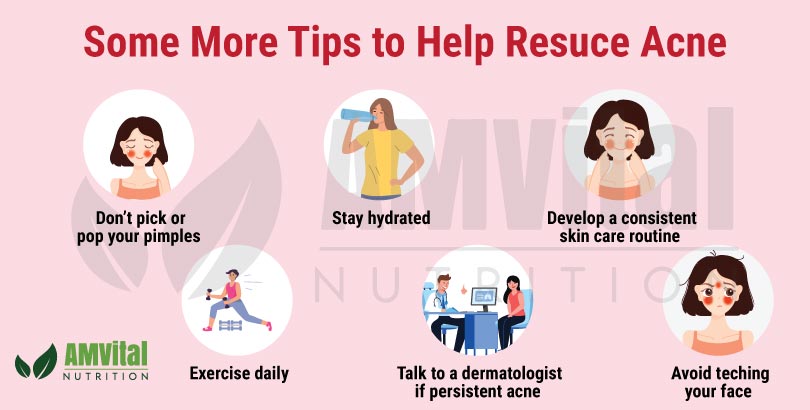 _________________________________________________________________________________________
_________________________________________________________________________________________
REFERENCES
Vaughn AR, Branum A, Sivamani RK. Effects of Turmeric (Curcuma longa) on Skin Health: A Systematic Review of the Clinical Evidence. https://pubmed.ncbi.nlm.nih.gov/27213821/ Phytother Res. 2016 Aug;30(8):1243-64. doi: 10.1002/ptr.5640. Epub 2016 May 23. PMID: 27213821.
Hollinger JC, Angra K, Halder RM. Are Natural Ingredients Effective in the Management of Hyperpigmentation? A Systematic Review. https://pubmed.ncbi.nlm.nih.gov/29552273/ J Clin Aesthet Dermatol. 2018 Feb;11(2):28-37. Epub 2018 Feb 1. PMID: 29552273; PMCID: PMC5843359.
Vollono L, Falconi M, Gaziano R, Iacovelli F, Dika E, Terracciano C, Bianchi L, Campione E. Potential of Curcumin in Skin Disorders. https://pubmed.ncbi.nlm.nih.gov/31509968/ Nutrients. 2019 Sep 10;11(9):2169. doi: 10.3390/nu11092169. PMID: 31509968; PMCID: PMC6770633.
Qian W, Liu W, Zhu D, Cao Y, Tang A, Gong G, Su H. Natural skin-whitening compounds for the treatment of melanogenesis (Review). https://www.ncbi.nlm.nih.gov/pmc/articles/PMC7271691/ Exp Ther Med. 2020 Jul;20(1):173-185. doi: 10.3892/etm.2020.8687. Epub 2020 Apr 24. PMID: 32509007; PMCID: PMC7271691.
Tu CX, Lin M, Lu SS, Qi XY, Zhang RX, Zhang YY. Curcumin inhibits melanogenesis in human melanocytes. https://pubmed.ncbi.nlm.nih.gov/21584871/ Phytother Res. 2012 Feb;26(2):174-9. doi: 10.1002/ptr.3517. Epub 2011 May 17. PMID: 21584871.
Gopinath H, Karthikeyan K. Turmeric: A condiment, cosmetic and cure. https://pubmed.ncbi.nlm.nih.gov/29243674/ Indian J Dermatol Venereol Leprol. 2018 Jan-Feb;84(1):16-21. doi: 10.4103/ijdvl.IJDVL_1143_16. PMID: 29243674.
@inproceedings{Waghmare2017TurmericAM, title={Turmeric as Medicinal Plant for the Treatment of Acne Vulgaris}, author={Priyanka R. Waghmare and Priynka G. Kakade and Prashant L. Takdhat and Ashwini M. Nagrale and S. M. Thakare and Mm Parate}, year={2017} } https://www.semanticscholar.org/paper/Turmeric-as-Medicinal-Plant-for-the-Treatment-of-Waghmare-Kakade/
Prasad S, Aggarwal BB. Turmeric, the Golden Spice: From Traditional Medicine to Modern Medicine. In: Benzie IFF, Wachtel-Galor S, editors. Herbal Medicine: Biomolecular and Clinical Aspects. 2nd edition. Boca Raton (FL): CRC Press/Taylor & Francis; 2011. Chapter 13. Available from: https://www.ncbi.nlm.nih.gov/books/NBK92752/
In Vitro Anti-Propionibacterium Activity by Curcumin Containing Vesicle System https://www.jstage.jst.go.jp/article/cpb/61/4/61_c12-01043/_html/-char/
Low-dose blue light irradiation enhances the antimicrobial activities of curcumin against Propionibacterium acnes https://www.sciencedirect.com/science/article/abs/pii/
Taiba Tariq
Taiba Tariq is a healthcare nutrition hobbyist, enthusiastic about researching healthcare & skincare news while analyzing the latest and science-backed evidence about nutrition, skin care, and supplements. She wants to help people regain their beauty, health, and well-being through natural means.
all author posts
